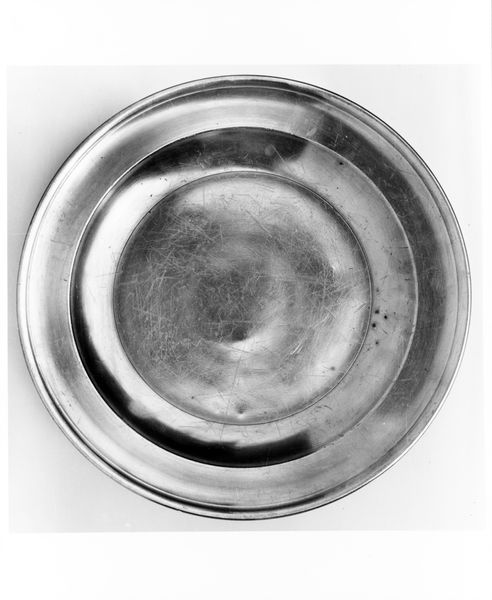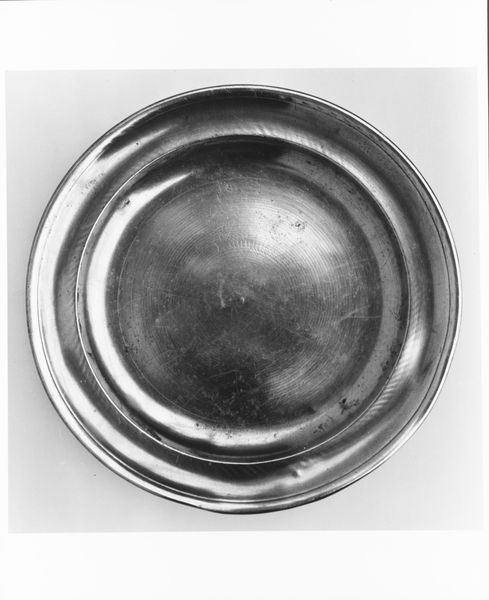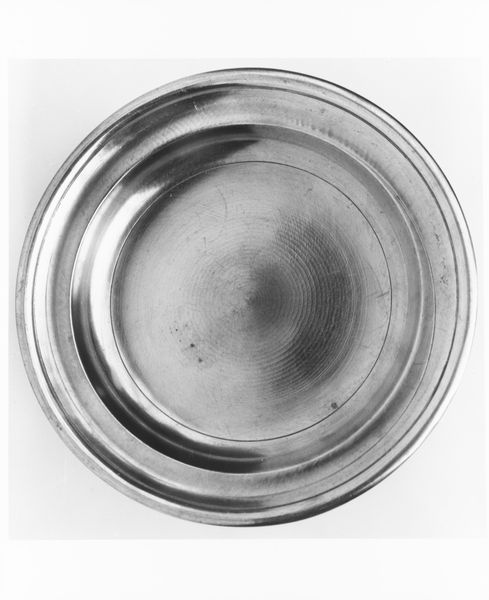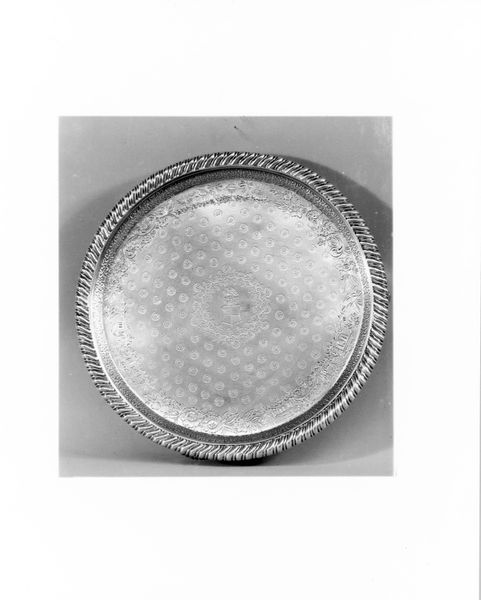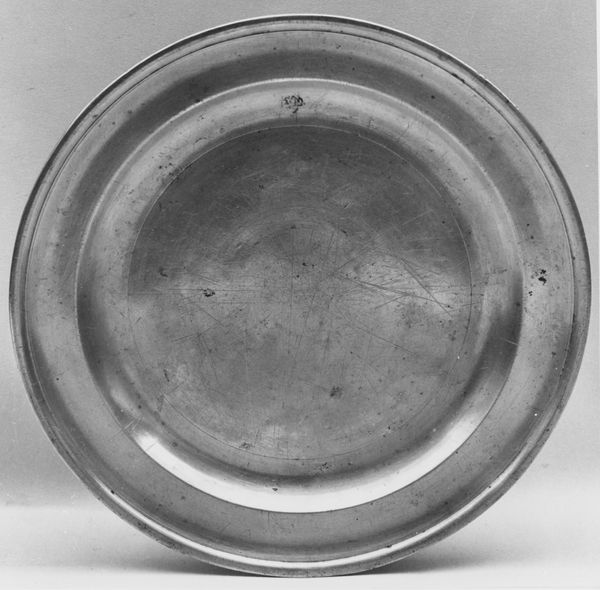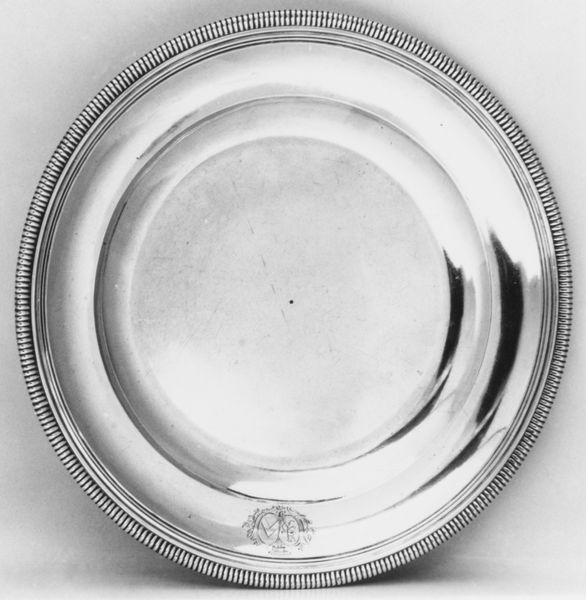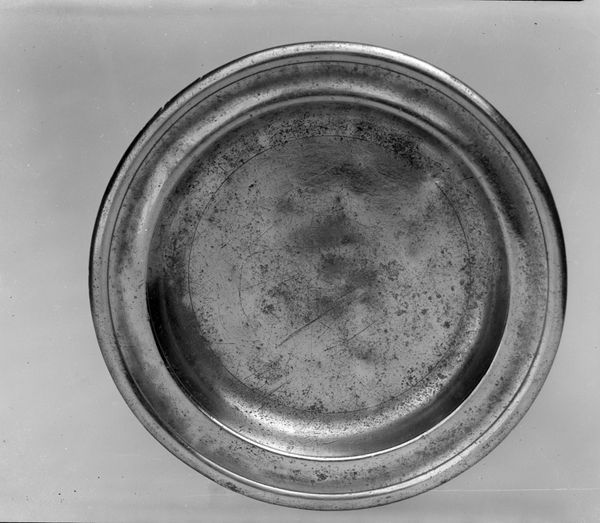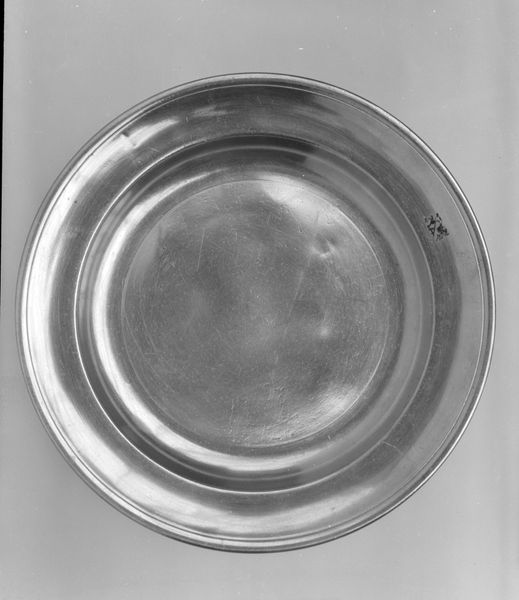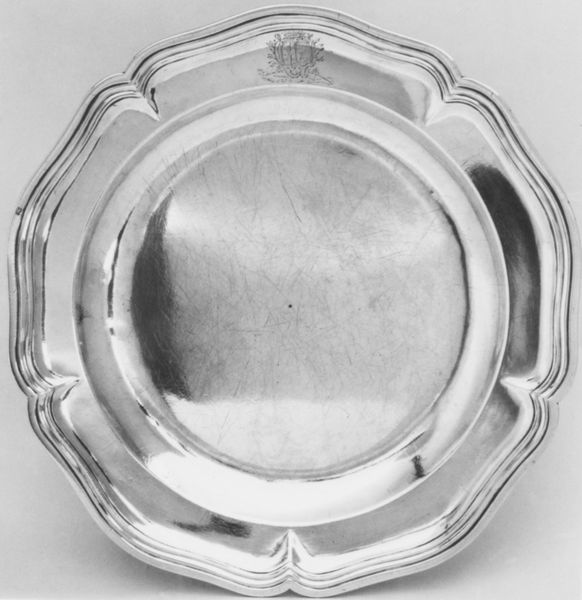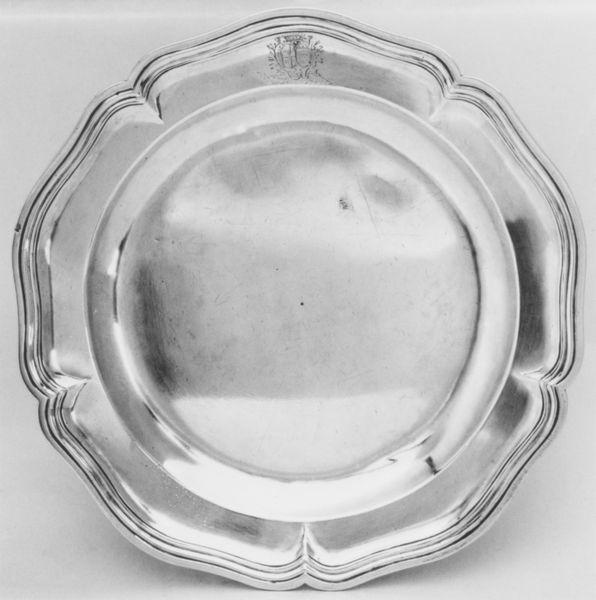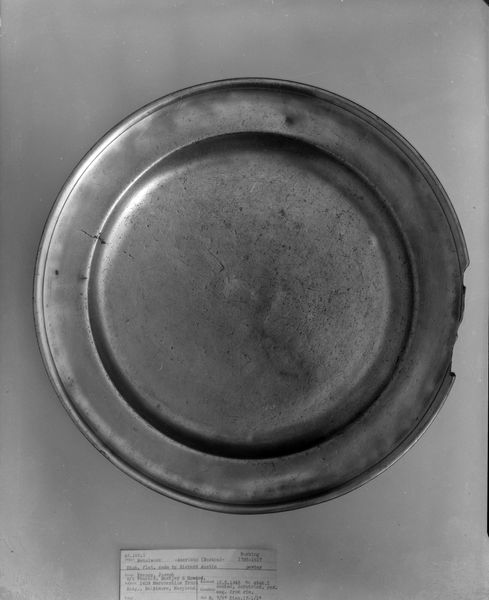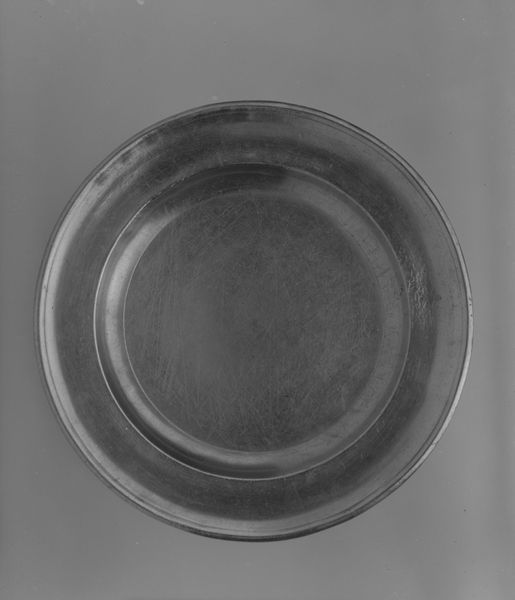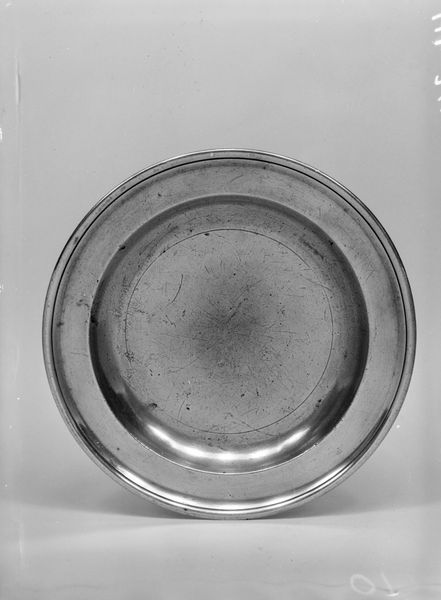
silver, photography
#
silver
#
photography
#
macro photography
Dimensions: H. 1 1/8 in. (2.9 cm); Diam. 14 3/4 in. (37.5 cm)
Copyright: Public Domain
Curator: The artwork before us, a piece entitled "Dish," dates to between 1713 and 1742. The photograph captures it in silver, a medium emblematic of status in that period, now residing at The Metropolitan Museum of Art. Editor: The image conveys a certain austerity. Its circular composition and grayscale evoke simplicity and precision, yet it feels tactile due to the light interacting with what seems to be a hammered surface. Curator: Indeed, silver at this time served purposes beyond mere function. Owning such pieces reflected social standing and provided opportunities for display. What the artisan created becomes an emblem of economic vitality and social grace. Editor: I’m interested in that hammering. It creates this repeating pattern of convex forms that almost dissolves the form; it makes this simple thing more complex than it needs to be and adds visual interest through light and shadow. It moves it beyond a merely functional thing. Curator: Precisely, but we must consider the wider economic structures that made this display of affluence possible. These objects, symbols of luxury, reflect an era of global trade and colonialism. How does our interpretation affect present considerations of wealth and equity? Editor: Thinking about those repetitive dents from a formalist viewpoint, there is also a visual tension. It contrasts the controlled pattern of the hammering to the absolute plainness of the plate's shape, but adds dimension that smooth metal could never accomplish. It allows us to read the light better and that informs the viewer. Curator: This invites a question, what does art's existence in a place like the Met do to the interpretation? Are we showcasing skill and artistry or also the problematic social frameworks? Editor: Interesting. When I visually process this dish now, I can appreciate both its aesthetic appeal as a well-crafted item, and think about the hands and system that created it, with greater critical awareness.
Comments
No comments
Be the first to comment and join the conversation on the ultimate creative platform.
